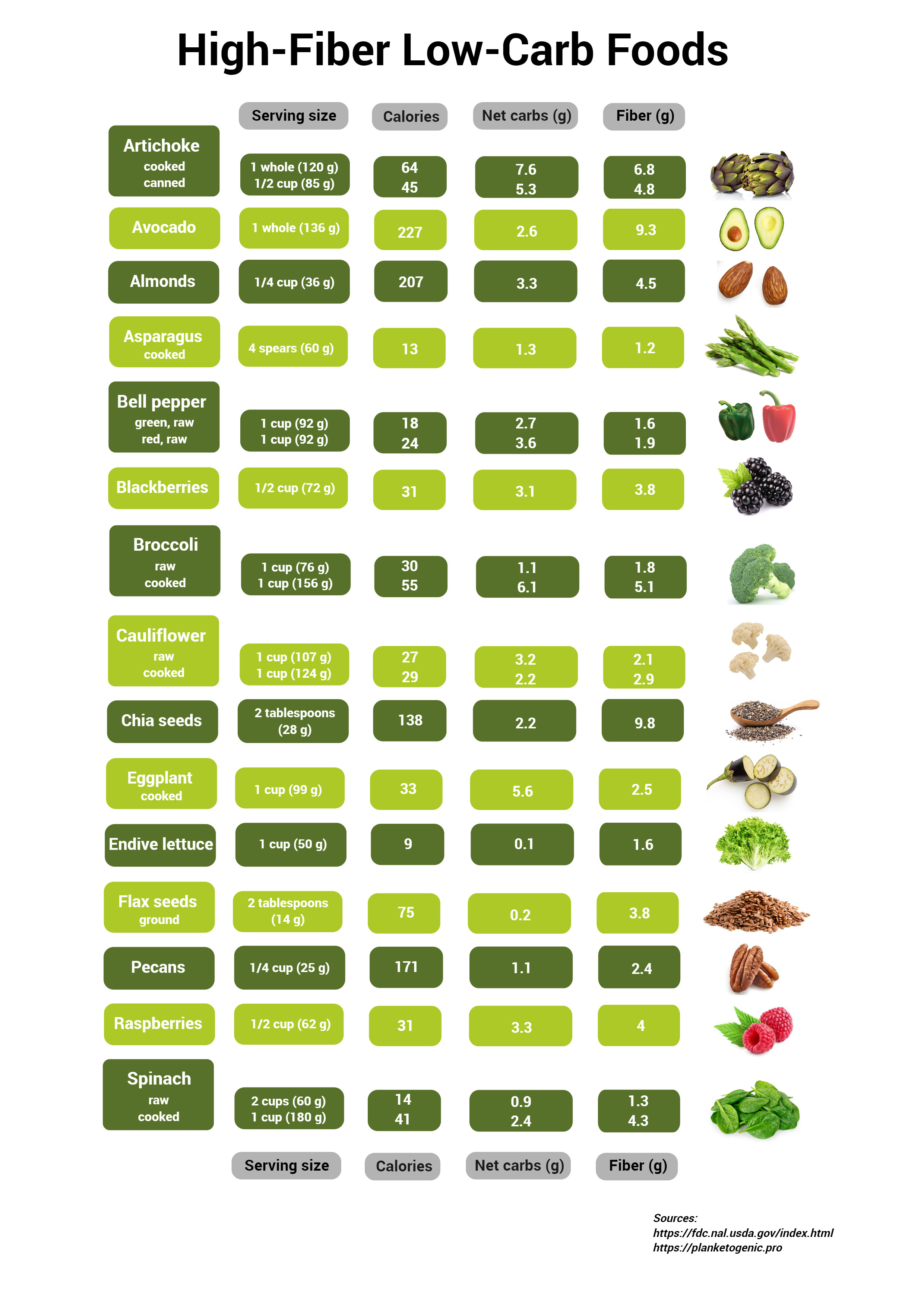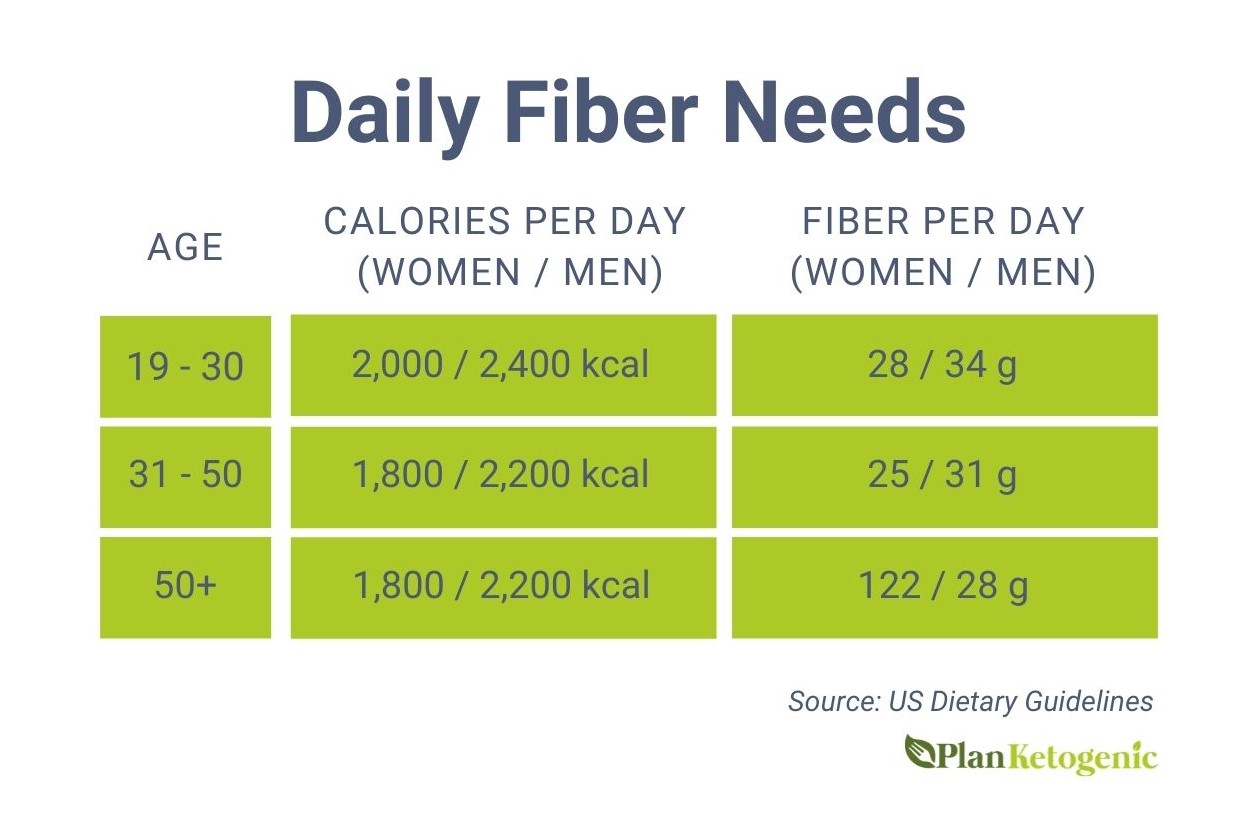
“More than 90 percent of women and 97 percent of men do not meet recommended intakes for dietary fiber,” according to the Dietary Guidelines for Americans.
Odds are, you’re not getting enough of this important nutrient.
Why does it matter, and what can you do about it?
This article will give you a quick rundown of the benefits of fiber to get you motivated, a visual chart of low-carb, high-fiber foods to eat (get ready to screenshot!), and an easy guide to how much of this nutrient you should be eating each day.
Fiber is considered a nutrient of public health concern for underconsumption. Increasing your intake can have a powerful positive effect on your short and long-term health.
The best way to eat more fiber is to be aware of the foods that contain it and mindfully work these products into our eating patterns.
This takes some extra effort on a low-carb diet because many fiber-rich foods are also high in carbohydrates (beans, lentils, fresh and dried fruits, and whole grains).
To make it easy, here’s a chart of low-carb, keto-friendly foods that are also good sources of fiber. Always have these healthy staples on hand and you’ll naturally eat more fiber every day.

High-Fiber Low-Carb Foods
| FOOD | Serving size | Calories (kcal) | Net carbs (g) | Fiber (g) |
|---|---|---|---|---|
| Artichokes cooked canned | 1 whole (120 g) 1/2 cup (85 g) | 64 45 | 7.6 5.3 | 6.8 4.8 |
| Avocado raw | 1 fruit (136 g) | 227 | 2.6 | 9.3 |
| Almonds | ¼ cup (36 g) | 207 | 3.3 | 4.5 |
| Asparagus cooked | 4 spears (60 g) | 13 | 1.3 | 1.2 |
| Bell pepper green, raw red, raw | 1 cup (92 g) 1 cup (92 g) | 18 24 | 2.7 3.6 | 1.6 1.9 |
| Broccoli raw cooked | 1 cup (76 g) 1 cup (156 g) | 30 55 | 1.1 6.1 | 1.8 5.1 |
| Cauliflower raw cooked | 1 cup (107 g) 1 cup (124 g) | 27 29 | 3.2 2.2 | 2.1 2.9 |
| Blackberries raw | ½ cup (72 g) | 31 | 3.1 | 3.8 |
| Chia seeds | 2 tablespoons (28 g) | 138 | 2.2 | 9.8 |
| Eggplant cooked | 1 cup (99 g) | 33 | 5.6 | 2.5 |
| Endive lettuce raw | 1 cup (50 g) | 9 | 0.1 | 1.6 |
| Flax seeds ground | 2 tablespoons (14 g) | 75 | 0.2 | 3.8 |
| Pecans | ¼ cup (25 g) | 171 | 1.1 | 2.4 |
| Raspberries raw | ½ cup (62 g) | 32 | 3.3 | 4 |
| Spinach raw cooked | 2 cups (60 g) 1 cup (180 g) | 14 41 | 0.9 2.4 | 1.3 4.3 |
Source: USDA Nutrition Database
The recommended daily intake of fiber is 14 grams per 1,000 calories that you eat. Since your number of recommended daily calories depends on your age and gender, so does your fiber amount.
See chart below to check how much fiber you should get each day.

Keep in mind that your recommended intake of calories and macronutrients also depends on your body size, level of activity, and weight goals. Use a keto macros calculator to get your personalized results.
Many common sources of fiber are eliminated or restricted on a low-carb plan, including grains, fruits, beans, and lentils.
This is why keto beginners often have problems going to the bathroom. You have to make a conscious effort to make up for the lost fiber with keto-friendly foods.
Dietary fiber is a carbohydrate, but it cannot be digested by the body. That’s why we are able to subtract the amount of fiber from total carbohydrates in order to arrive at the number of net carbs.
Calculating net carbs is a daily activity for ketogenic eaters, so it is essential to be aware of how fiber factors into that equation.
Curious about going keto? Check out our complete guide to learn more.